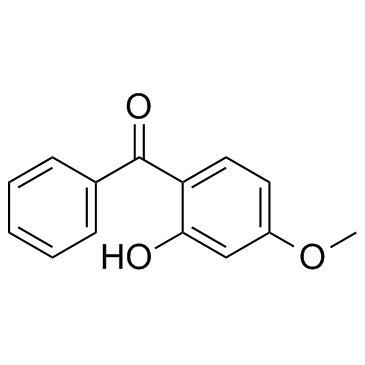Reaction of benzophenone UV filters in the presence of aqueous chlorine: kinetics and chloroform formation.
Stephen E Duirk, David R Bridenstine, Daniel C Leslie
文献索引:Water Res. 47(2) , 579-87, (2013)
全文:HTML全文
摘要
The transformation of two benzophenone UV filters (Oxybenzone and Dioxybenzone) was examined over the pH range 6-11 in the presence of excess aqueous chlorine. Under these conditions, both UV filters were rapidly transformed by aqueous chlorine just above circumneutral pH while transformation rates were significantly lower near the extremes of the pH range investigated. Observed first-order rate coefficients (k(obs)) were obtained at each pH for aqueous chlorine concentrations ranging from 10 to 75 μM. The k(obs) were used to determine the apparent second-order rate coefficient (k(app)) at each pH investigated as well as determine the reaction order of aqueous chlorine with each UV filter. The reaction of aqueous chlorine with either UV filter was found to be an overall second-order reaction, first-order with respect to each reactant. Assuming elemental stoichiometry described the reaction between aqueous chlorine and each UV filter, models were developed to determine intrinsic rate coefficients (k(int)) from the k(app) as a function of pH for both UV filters. The rate coefficients for the reaction of HOCl with 3-methoxyphenol moieties of oxybenzone (OXY) and dioxybenzone (DiOXY) were k(1,OxY) = 306 ± 81 M⁻¹s⁻¹ and k(1,DiOxY) = 154 ± 76 M⁻¹s⁻¹, respectively. The k(int) for the reaction of aqueous chlorine with the 3-methoxyphenolate forms were orders of magnitude greater than the un-ionized species, k(2,OxY) = 1.03(±0.52) × 10⁶ M⁻¹s⁻¹ and k(2_1,DiOxY) = 4.14(±0.68) × 10⁵ M⁻¹s⁻¹. Also, k(int) for the reaction of aqueous chlorine with the DiOXY ortho-substituted phenolate moiety was k(2_2,DiOxY) = 2.17(±0.30) × 10³ M⁻¹s⁻¹. Finally, chloroform formation potential for OXY and DiOXY was assessed over the pH range 6-10. While chloroform formation decreased as pH increased for OXY, chloroform formation increased as pH increased from 6 to 10 for DiOXY. Ultimate molar yields of chloroform per mole of UV filter were pH dependent; however, chloroform to UV filter molar yields at pH 8 were 0.221 CHCl₃/OXY and 0.212 CHCl₃/DiOXY.Copyright © 2012 Elsevier Ltd. All rights reserved.
相关化合物
| 结构式 | 名称/CAS号 | 分子式 | 全部文献 |
|---|---|---|---|
 |
二羟苯宗
CAS:131-53-3 |
C14H12O4 | |
 |
紫外线吸收剂UV-9
CAS:131-57-7 |
C14H12O3 |
|
Metabolism of UV-filter benzophenone-3 by rat and human live...
2015-01-15 [Toxicol. Appl. Pharmacol. 282(2) , 119-28, (2015)] |
|
Oral chemoprevention of skin cancer in mice by benzophenone ...
2013-06-01 [Anticancer Res. 33(6) , 2535-40, (2013)] |
|
Rapid determination of nine parabens and seven other environ...
2014-11-01 [Int. J. Hyg. Environ. Health 217(8) , 845-53, (2014)] |
|
A novel two-dimensional liquid-chromatography method for onl...
2015-08-01 [Anal. Bioanal. Chem 407 , 6137-48, (2015)] |
|
Sensitive determination of salicylate and benzophenone type ...
2009-01-01 [Anal. Chim. Acta 638(1) , 36-44, (2009)] |